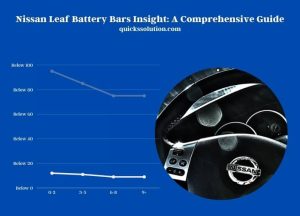Published on: August 2, 2023
Written by Amlan Roy / Fact-checked by Hashim Manna
Relearning the crankshaft sensor is vital upon replacement. The absence of this step could lead to complications such as a non-starting engine, stalling, or rough running of the engine.
The crankshaft sensor plays a crucial role in the operation of an engine, primarily involved with timing and synchronization. Its job is to monitor the position and rotational speed (RPM) of the crankshaft and send this information to the engine control unit (ECU). The ECU uses this data to adjust the ignition and fuel injection timing for optimal engine performance. Therefore, the calibration of this sensor is essential.

The relearning process, also known as programming, helps the ECU precisely understand the position of the crankshaft. In absence of accurate data from the crankshaft sensor, the ECU may fail to optimize the ignition and fuel timing. This situation can cause a poor running engine or even prevent the engine from starting.
Moreover, if the ECU does not recognize the sensor’s readings, it can trigger a diagnostic trouble code (DTC). These DTCs can help technicians and vehicle owners identify potential error detection in the engine operation. Relearning or programming the crankshaft sensor aids in reducing such instances and contributes to the overall vehicle performance.
It’s clear that the relearning process plays a pivotal role in the functioning of a crankshaft sensor. Ignoring this step might result in the ECU receiving incorrect data, which can cause several issues with the engine’s operation. Thus, it’s strongly advised to carry out the relearning process whenever the crankshaft sensor is replaced.
Crankshaft Sensor: What You Need to Know
Defining a Crankshaft Sensor
A crankshaft sensor, often known as a crank position sensor or CPS, is a key component of modern vehicles. It is a device that monitors the rotational speed and position of the crankshaft, a vital engine component. The information captured by the CPS plays a crucial role in managing engine timing and combustion process.
Role of the Crankshaft Sensor in a Vehicle
Crankshaft sensors are crucial for the efficient operation of a vehicle’s engine. By monitoring the rotational speed and position of the crankshaft, they help manage several key engine functions. These include fuel injection, ignition timing, and other engine parameters necessary for optimum vehicle performance.
Key Components and Their Functions in a Crankshaft Sensor
| Component | Function |
| Magnetic Field | Generates signals |
| Toothed Wheel | Passes through the magnetic field to disrupt the signal |
| Sensor Coil | Detects disruptions to create electrical pulses |
Process of Installing a Crankshaft Sensor
Prerequisites for Installing a Crankshaft Sensor
Before installing a crankshaft sensor, you need to gather all the necessary tools, such as a socket set, a new sensor, and possibly a jack. It is also advised to disconnect the battery before starting the process to avoid any electrical complications.
Steps Involved in Crankshaft Sensor Installation
The steps of installing a crankshaft sensor usually involve locating the sensor, disconnecting it, removing it, and then installing the new one. However, the process may vary slightly depending on the vehicle model. Always refer to the specific vehicle’s manual for precise instructions.
Programming a Crankshaft Sensor: Fact or Fiction?
Is Programming a Crankshaft Sensor Necessary?
The question of whether a crankshaft sensor needs programming is a prevalent one. The simple answer is, not usually. Most crankshaft sensors are plug-and-play devices that start working as soon as they are installed. Yet, certain vehicle models may necessitate programming.
Situations That May Necessitate Crankshaft Sensor Programming
Though programming a crankshaft sensor isn’t typically necessary, there are exceptions. For instance, in vehicles with more advanced and complex engine control units (ECUs), programming may be required to ensure the new sensor communicates efficiently with the ECU.
Situations and Corresponding Needs for Crankshaft Sensor Programming
| Situation | Need for Programming |
| Basic Engine Control Unit | Not Needed |
| Advanced Engine Control Unit | May be Needed |
Practical Guide to Programming a Crankshaft Sensor
Essential Tools for Crankshaft Sensor Programming
To program a crankshaft sensor, you will need a computer with the right software to interface with your vehicle’s onboard diagnostics port. Professional mechanics often use specialized equipment for this task, but there are also consumer-level devices available.
Step-by-step Approach to Programming a Crankshaft Sensor
The process of programming a crankshaft sensor typically involves connecting your programming device to the vehicle’s onboard diagnostics port, selecting the correct vehicle profile, and following the prompts to reprogram the sensor. While this may sound straightforward, it can be complex and is usually best left to professionals.
Implications of Non-programmed Crankshaft Sensors
Risks Posed by Non-programmed Crankshaft Sensors
If your vehicle requires a programmed crankshaft sensor and it is not programmed, several issues can arise. These include poor engine performance, increased emissions, and even possible damage to the engine.
Effects of Non-programmed Sensors on Vehicle Operation
Non-programmed sensors in vehicles that require them can significantly affect vehicle operation. The vehicle may experience problems like stalling, rough idling, and decreased fuel efficiency. In some cases, the engine may not start at all.
Potential Issues with Non-Programmed Crankshaft Sensors
| Potential Issue | Effect on Vehicle |
| Poor Engine Performance | Reduced Power and Efficiency |
| Increased Emissions | Environmental Damage |
| Engine Damage | Costly Repairs |
Overcoming Common Crankshaft Sensor Issues
Symptoms of a Malfunctioning Crankshaft Sensor
Malfunctioning crankshaft sensors may produce several symptoms, which can help you identify a potential problem. Some common signs include difficulty starting the engine, intermittent stalling, irregular idle, decreased fuel efficiency, or even a “Check Engine” light.
Effective Solutions for Frequent Crankshaft Sensor Problems
The most common solution to a problematic crankshaft sensor is replacement. However, sometimes the sensor may simply be dirty or its connection might be loose. In such cases, cleaning the sensor or tightening the connection can solve the issue.
Expert Opinions on Crankshaft Sensors
Perspectives from Experienced Auto-Mechanics
Auto-mechanics generally agree that while most crankshaft sensors do not require programming, there are exceptions, particularly for high-end or newer model vehicles. They recommend referring to your vehicle’s manual or seeking professional help if you’re unsure.

Views from Renowned Vehicle Manufacturers
Vehicle manufacturers often provide guidance on whether their models need a programmed crankshaft sensor. It’s always best to follow the manufacturer’s advice to ensure optimal performance and avoid potential damage.
FAQs
Can You Reset a Crankshaft Position Sensor?
Yes, you can reset a crankshaft position sensor, typically by disconnecting and reconnecting the car battery. This can force the car’s computer system to restart and potentially fix sensor errors. However, this method might not always be effective, especially if the sensor is faulty.
Why Is My New Crankshaft Sensor Not Working?
If your new crankshaft sensor isn’t working, it might be due to incorrect installation or a defective unit. It could also be due to issues with the wiring or connection. Ensure the sensor is installed correctly and check the wiring for any damage.
What Is the Relearn Procedure for a Crankshaft Position Sensor?
The relearn procedure for a crankshaft position sensor involves resetting the sensor so that it can accurately read the crankshaft’s position. The exact steps vary by vehicle, so it’s best to refer to the manufacturer’s instructions or consult a professional.
How Do You Relearn a Crankshaft Sensor Without a Scanner?
Relearning a crankshaft sensor without a scanner can be tricky. It often involves a series of steps like revving the engine to a certain speed or running it for a specific period. The process varies significantly between vehicle models, so consult your vehicle manual for accurate instructions.
Does a Camshaft Sensor Need to Be Programmed?
Typically, a camshaft sensor does not need to be programmed. However, like crankshaft sensors, there may be exceptions depending on the vehicle’s make and model. It’s always best to refer to your vehicle’s manual or consult a mechanic.
What If I Changed the Crankshaft Position Sensor and the Car Won’t Start?
If you’ve changed the crankshaft position sensor and the car still won’t start, it might indicate a problem elsewhere. Possible issues could be with the ignition system, fuel supply, or other engine components. Consider having a mechanic perform a full diagnostic.
Will a Car Start With a Bad Crankshaft Sensor?
A car might start with a bad crankshaft sensor, but it won’t run efficiently. Symptoms of a failing sensor include poor fuel efficiency, stalling, and rough idling. In some cases, the vehicle may not start at all.
The debate on whether a crankshaft sensor needs programming does not have a single, straightforward answer. While the majority of crankshaft sensors do not need programming, certain vehicle models might require this extra step. The best course of action is always to consult the vehicle’s manual or seek professional advice. With that, you can ensure that your crankshaft sensor operates optimally and maintains your vehicle’s performance.
Read More:




